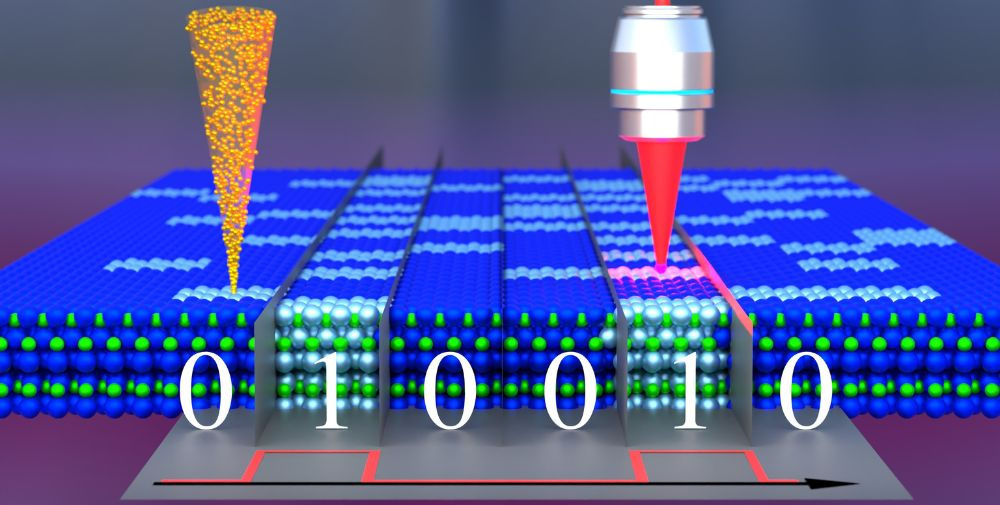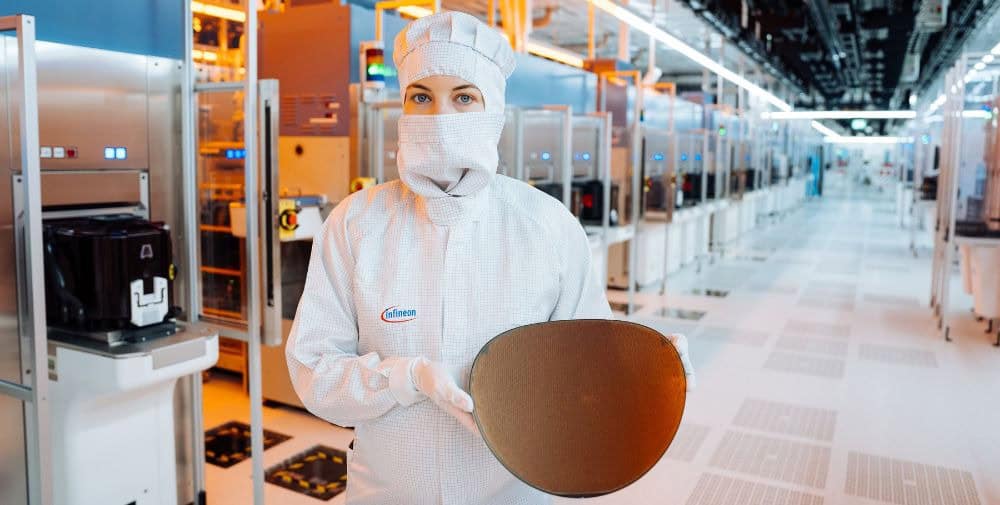
Recent estimates suggest that around 330 million terabytes of new data are created every day, with 90% of the world’s data being created in the last two years alone. Although the sheer numbers already highlight the need for advanced data storage technologies, this is by no means the only problem associated with this development. “The limited storage time of current media requires data migration within a few years to avoid losses. Apart from the fact that we are trapped in eternal data migration procedures, this significantly increases energy consumption, as a considerable amount of energy is consumed in this process,” explains Dr. Georgy Astakhov from the Institute of Ion Beam Physics and Materials Research at HZDR.
To mitigate this looming crisis, Astakhov’s team is now introducing a new concept of long-term data storage based on atomic defects in silicon carbide. These defects are incorporated by a focused beam of protons or helium ions and read out using luminescence mechanisms associated with the defects.
Conventional storage devices are slowed down by physics
Currently, magnetic storage devices are the first choice when it comes to large capacity storage solutions, with the laws of physics setting the limits of achievable storage density. To increase them, the magnetic particles must shrink. However, thermal fluctuations and diffusion processes in the material then become more important, which in turn has a negative effect on the storage duration. Adjusting the magnetic properties of the material could suppress this effect, but this comes at a price: higher energy for storing information. And there are also physical limitations to the optical readout of stored information. Due to the so-called diffraction limit, the smallest recording bit is restricted in size: its dimensions cannot become smaller than half the wavelength of light, a limit that thus determines the maximum storage capacity. Multidimensional optical recording offers a way out of this dilemma.
Silicon carbide has defects at atomic level, in particular silicon atoms are missing in the lattice structure. The defects are created by a focused proton or helium ion beam, which enables high spatial resolution, high write speed and low energy for storing a single bit. “The diffraction limit of storage density, which is typical for optical media, also applies in our case. We overcome it by using four-dimensional coding methods. This involves controlling the three spatial dimensions and an additional fourth dimension of intensity by varying the lateral position, depth and number of defects. We then read out the stored data optically using the photoluminescence caused by excitation. In addition, the spatial storage density can be significantly improved by focused electron beam excitation, which induces observable cathodoluminescence,” Astakhov highlights some outstanding features of his method.
Storing data over generations
The stored information could disappear from the defects again depending on the conditions under which the medium is stored, but the scientists have good news regarding their material: “This deactivation of defects depends on the ambient temperature. Our observations indicate a minimum archiving time of several generations under normal conditions,” says Astakhov. And there is more: with near-infrared laser excitation, modern coding techniques and multi-layer data storage, namely the stacking of up to ten silicon carbide layers on top of each other, the team achieves an areal storage density that corresponds to that of Blu-ray discs. If one switches to electron beam excitation instead of optical excitation for reading out the data, the achievable limit corresponds to the current record areal storage density of a prototype magnetic tape, which, however, has a shorter storage duration and higher energy consumption.
For this work, the Rossendorf team joined forces with researchers from Julius-Maximilians-Universität Würzburg (Germany), the Jet Propulsion Laboratory of the California Institute of Technology (USA), the National Institute for Quantum Science and Technology (Japan) and the University of Tōhoku (Japan). The team’s conceptual approach is not limited to silicon carbide and can be extended to other materials with optically active defects, including two-dimensional materials.
Publication
M. Hollenbach, C. Kasper, D. Erb, L. Bischoff, G. Hlawacek, H. Kraus, W. Kada, T. Ohshima, M. Helm, S. Facsko, V. Dyakonov, G. V. Astakhov, Ultralong-term high-density data storage with atomic defects in SiC, in Advanced Functional Materials, 2024 (DOI: 10.1002/adfm.202313413)
Contact
Dr. Georgy Astakhov | Head of Quantum Technologies
Institute of Ion Beam Physics and Materials Research at the HZDR
Tel.: +49 351 260 3894 | E-Mail: g.astakhov@hzdr.de
– – – – – –
Further links
👉 www.hzdr.de
Photo: M. Hollenbach, H. Schultheiß




